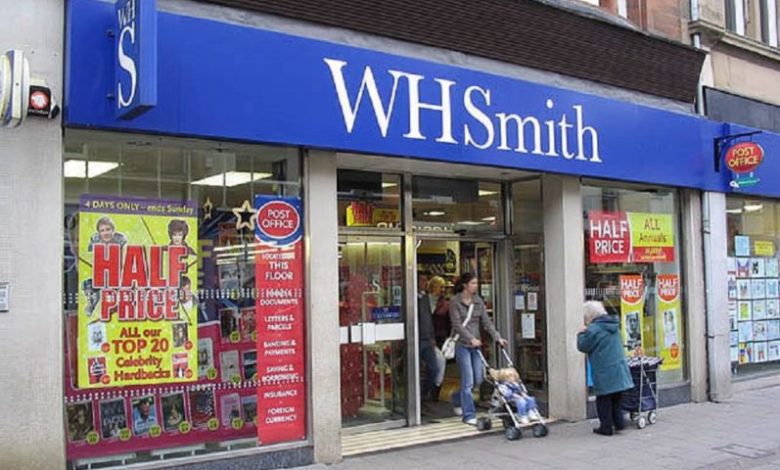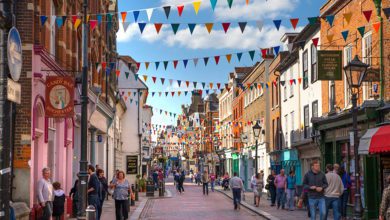WHSmith’s high street exit: what it means for the retail industry
WHSmith’s high street presence has long been a staple of British retail, but as consumer habits shift and the challenges of traditional retail mount, the retailer is set to retreat from the high street. Retail Sector explores what’s driving this strategic move, what it means for the future of WHSmith, and what lessons other retailers can learn from its transformation

After more than 230 years as a staple of British high streets, WHSmith is considering selling off its entire high street business. With around 500 stores facing an uncertain future, the company is shifting its focus to travel retail — airports, railway stations, and motorway service areas — where it now makes 85% of its profits.
The decision signals a stark transformation, not just for WHSmith, but for the wider retail sector. As high streets continue to struggle with declining footfall, rising costs, and digital disruption, is this move a necessary evolution or another sign of an industry in crisis?
Why is WHSmith leaving the high street?
“The UK high street has been in decline for many years,” says restructuring expert Elaine Nolan, partner at Keystone Law. “Town centres are losing many retail businesses due to online competition, increasing business rates, and a lack of footfall.”
The high street’s struggles have been well-documented, but for WHSmith, the pressures have been particularly acute. Once a go-to destination for books, newspapers, and stationery, the retailer has found itself squeezed by supermarkets, Amazon, and changing consumer habits. The covid pandemic further accelerated these trends, pushing more shoppers online and reducing the need for in-person purchases of print media.
Nolan highlights the economic factors at play: “Overall costs following the budget means additional cost burdens for many retailers – increases in National Insurance, minimum wage and business rates will leave many with no choice but to close stores. Energy prices and inflation (predicted to be 3.7% in Q3 by the Bank of England) are also contributing to consumers being more cautious.”
This economic squeeze, coupled with shifting consumer priorities, has led WHSmith to double down on its travel retail business, where it faces less competition from e-commerce and benefits from high-footfall locations.
If the sale goes ahead, the new owners will not be able to use the WHSmith brand name, marking the first time in over two centuries that the retailer will disappear from British high streets. The move is symbolic of a larger trend of long-established retailers retreating from town centres.
“WHSmith’s exit from the high street marks the end of an era, much like the disappearance of Woolworths or Blockbuster,” says Chris Camacho, CEO of Cheil UK, a digital marketing company specialising in retail innovation. “For generations, it was a fixture of local shopping, and its absence will likely reinforce perceptions that the high street is in irreversible decline.”
However, he also notes that heritage alone is not enough to sustain a business in today’s retail landscape: “In today’s retail landscape, brand recognition alone is not enough to sustain loyalty. Consumers expect brands to evolve with them, and WHSmith’s decision suggests it believes its future lies elsewhere.”
Is travel retail a sustainable alternative?
While high street retail remains in decline, WHSmith’s pivot to travel retail has so far proven lucrative. But is it a long-term solution?
According to Guy Elliott, senior vice president at digital consulting company Publicis Sapient, travel retail provides WHSmith with the chance to concentrate on a more profitable segment of the business, where it can capitalize on a captive audience with limited alternatives.
Elaine Nolan backs this up with data: “According to Market Research, the UK travel retail market is expected to reach $6.32bn (£4.8bn) by 2032, growing annually at approximately 8.16% during 2025-2032.”
However, Camacho warns that WHSmith cannot afford to be complacent: “No retail strategy is immune to external pressures, and WHSmith will need to ensure its travel model evolves alongside changing consumer behaviour”, he says. “Airline industry fluctuations, economic downturns, and shifts in traveller spending habits could all impact demand.”
The shift away from physical media consumption is another factor that could threaten WHSmith’s success. “Digital media continues to reduce the need for physical books, magazines, and newspapers,” Camacho notes. “WHSmith’s challenge is to avoid the complacency that led to its high street decline. If it fails to innovate and refresh its product mix, store experience, and customer engagement strategies, it could find itself facing similar struggles in the future.”
The wider impact
One of the biggest concerns about WHSmith’s exit is the fate of the post offices it operates within its stores. WHSmith currently runs around 200 post offices, many of which serve as vital community hubs.
Elaine Nolan offers some reassurance: “WHSmith has stated that the post offices within its shops will remain should the sale of its High Street business go ahead. It said its partnership with the Post Office was an ‘important part’ of the business and ‘will continue should a sale of our High Street business to new owners proceed’,” she says.
However, Camacho warns that if new owners choose to close these post offices, communities could face significant consequences, as they provide essential services beyond postal solutions, including banking and government-related transactions, particularly for elderly residents and small businesses. He emphasises that without these services, new ownership could create major gaps in local infrastructure.
WHSmith’s departure from the high street also raises concerns about the future of print media. The retailer has been a major distributor of newspapers, magazines, and books, and its exit could accelerate the decline of print sales.
“Print media has been in decline for years due to the dominance of digital alternatives, and WHSmith’s exit from the high street could further hasten this shift by reducing the availability of physical newspapers, magazines, and books,” says Camacho. “However, the real challenge for print media is not just accessibility, but relevance.”
Can the high street be saved?
With WHSmith exiting, one question remains: Can high street retail be revitalised?
Camacho believes that simply maintaining the existing retail model is not enough. “The biggest challenge for any new owner will be ensuring the stores remain relevant to today’s consumers,” he warns. “Simply maintaining the existing retail model will not be enough. Success will depend on transforming these spaces into destinations that offer something beyond what people can find online.”
Nolan also highlights the need for change, saying: “Brand identity, flexible leases to aid occupancy cost burdens which inevitably lead to unprofitability, and offering consumers different products or experiences to aid footfall.”
Private equity firms such as Alteri and Modella Capital have shown interest in acquiring WHSmith’s high street stores, but their success would depend on their ability to reinvent the business. Camacho stated that the retailers thriving today are those that embrace transformation rather than preservation. He further mentioned that if private equity firms like Alteri or Modella Capital aim to revitalise WHSmith’s high street business, they would need to go beyond cost-cutting and concentrate on reinventing the customer experience.
WHSmith’s struggles and strategic shift offer valuable lessons for other retailers. The days of surviving on legacy brand recognition alone are over — today’s retail environment demands innovation, digital integration, and a focus on experience.
“The key lesson from WHSmith’s struggles is that traditional retail models cannot survive without bold reinvention,” concludes Camacho. “High street retailers must prioritise experience, convenience and innovation to stay relevant in an era where consumer expectations are constantly shifting. Those that are brave enough to challenge legacy thinking and be first to embrace change will be the ones that last.”







